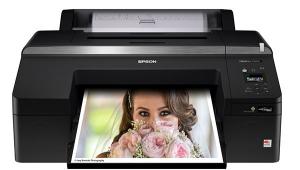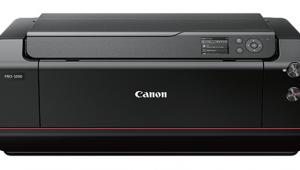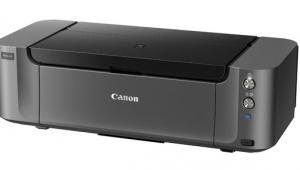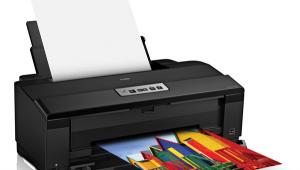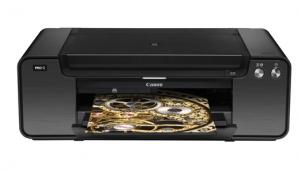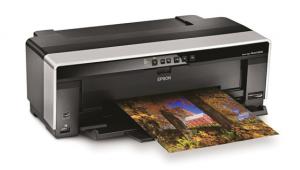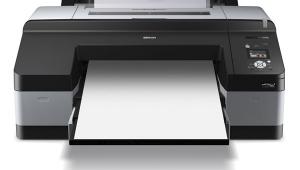All-in-One Printers; Versatile, But Good Enough For Photographers?
I’ve been a long-time believer in the old adage “jack of all trades, master of none.” This has certainly been the case in the past when it comes to getting high-quality photos and good scans from an All-in-One (AiO) device (printer/scanner/faxer). But, things are changing fast in the digital world. A couple of years ago I wouldn’t have thought it possible to get a lab-quality print from a sub-$100 inkjet, but today there are several that can do this with ease.
I decided to take a look at two new AiO devices, the Canon PIXMA MP980 and the HP Photosmart Premium Fax All-in-One to see how they did with photo printing and scanning—two functions that any photographer needs. How would they compare to a stand-alone printer and scanner? Not everyone is blessed with the space or the budget for dedicated machines, so the AiO option might be an attractive one to consider.
What’s Common
Both the Canon and the HP offer photo-quality printing with individual ink tanks. Both use dye inks for photo printing, and add a pigment black for text output. Both printers have built-in duplex (double-sided) printing, and both include wireless, USB, and Ethernet in the standard configuration. It’s past this point that they begin to differ in features.
Either printer will work directly from a memory card, which is a popular feature for casual prints—pop the memory card into the slot and print your JPEG images with on-board image adjustments like redeye correction and color enhancement. Bluetooth is optional with the Canon, but it’s included with the HP. If you want to print from your cell phone, you’ll appreciate the Bluetooth connection. The other common feature for both products is the price: $299.99 (list).
Canon’s PIXMA MP980
The MP980 from Canon (#1) is the latest in the MP series, and the first with a new gray ink to improve black-and-white output as well as shadow detail. The inks are the same ChromaLife 100 found in their dedicated PIXMA printers like the Pro9000. This is a six-ink printer with cyan, magenta, yellow, black, gray, and pigment black. The pigment black is only used in Text mode documents. Both 802.11b and g wireless are supported, and you can add an optional Bluetooth unit. Like most printers in this class, printing directly from memory cards or via PictBridge is also supported, and the printer has a number of built-in image adjustment features.
 |
|
|
The MP980 was very easy to set up on my mixed Vista/Mac network. The Canon network utility found the printer wirelessly and installed correctly on all machines with no additional information required on my part.
HP’s Photosmart Premium Fax All-in-One
The HP (#2) was more problematic to set up wirelessly on my network. I had compatibility issues with the firewall I use (McAfee) that wouldn’t allow the printer to be seen until the firewall was disabled. I ended up using the Windows Vista firewall for my tests. Once this was done, set up proceeded without further issues. I had no problems at all with setting up on a Mac system.
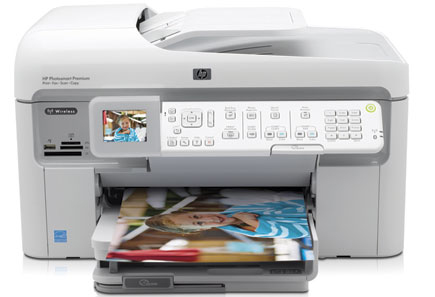 |
|
|
The HP printer uses a five-ink system—pigment black for text, and cyan, magenta, yellow, and photo black for photo printing. The inks are HP’s Vivera and come in two sizes. The XL size gives you about 2.5 times the prints at less than twice the cost, making it a much more effective way to print.
Printing from all machines worked fine using the wireless connection. Scanning was less convenient since you do need to go to the device to load the film or image to be scanned, but once loaded, scanning over the wireless connection worked flawlessly.
Scanning
One of the driving factors in this type of device is the ability to handle the odd scanning job that you might have. Both devices can turn out a quick scan of photos or documents, and work as a photocopy machine with multiple copies.
Canon’s PIXMA MP980
The scanner in the Canon MP980 is a 4800x9600dpi CCD with a 48-bit color depth. Scanning from film negatives and transparencies is supported and Canon includes a film holder for 35mm strips or slides. There is no document feeder with the MP980, so each original must be manually placed on the scanner.
Scan quality for negatives and transparencies was very good. It’s not going to beat a dedicated film scanner like the Plustek or Nikon, but that’s to be expected from a multipurpose unit, and at this price point, I would rate the capabilities as excellent.
Scanning a 35mm negative at high quality takes about 10 minutes, generating an 86MB file in the process. Although the scanner supports 16-bit output through the Photoshop plug-in (#3), the included MP Navigator EX software supports only 8-bit scanning.
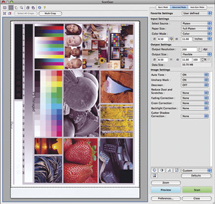 |
|
|
If you’d like to improve the quality of your scans, I recommend downloading a copy of VueScan from www.hamrick.com. VueScan gave me much better results than the Canon driver and supported 16-bit scans with no issues at all.
HP’s Photosmart Premium Fax All-in-One
If you’re interested in scanning negatives or transparencies only, you can stop reading right now—the Photosmart Premium only supports reflective (print) scans. The hardware resolution matches that of the Canon—4800x9600dpi at 48-bits. HP includes their Photosmart Studio software. HP Scan Pro (#4) is not as sophisticated as the Canon application, but there is a TWAIN driver that is installed for Photoshop Elements (the driver did not install for CS4) that is more full featured (#5).
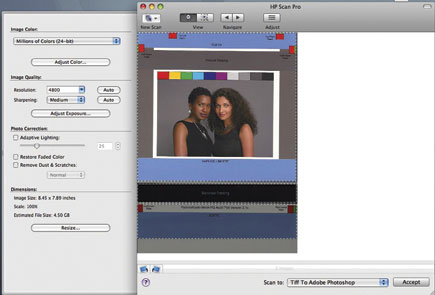 |
|
|
The HP does have an automatic document feeder, so if you have several pages to scan, you’ll appreciate this feature. At high quality, a scan takes about 12 minutes to complete. If you’re using the Scan Pro software, you’re limited in file size—I was only able to scan an 8x10 image at 200dpi. Using the TWAIN driver gets around this issue though and lets you scan at the full hardware resolution of the printer.
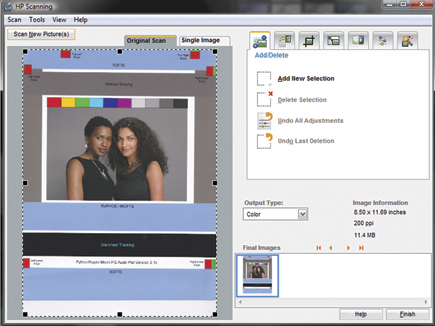 |
|
|
- Log in or register to post comments

